
This worksheet provides students with practice questions related to atomic structure.
- Subject:
- Chemistry
- Physical Science
- Science
- Material Type:
- Activity/Lab
- Provider:
- Chemistry Inquiry
- Author:
- Jason Neil
- Date Added:
- 02/26/2019

This worksheet provides students with practice questions related to atomic structure.
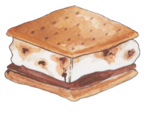
Design a prototype of a solar oven given a cardboard box, ruler, pencil, scissors, aluminum foil, and plastic wrap. Test the oven to see if a s’more is able to cook inside of it.
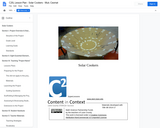
In this project students will research and then build a basic solar cooker shell made out of cardboard. Then they will run a variety of materials through experiments. Data from the experiments will be used to determine which materials should be added to the solar cooker shell to improve its ability to heat up food.
This project was created as a collaboration between a science and an engineering/woodshop class. The engineering class researched and build the basic solar cooker cardboard shells. The science class tested additional materials to add to the shells to improve the solar cookers. Then the engineering class, following the directions from reports created by the science class, added the materials to the solar cooker shells to create the final products.
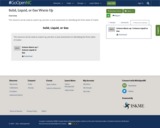
This resource can be used as a warm-up, pre-test, or post assessment on identifying the three states of matter.
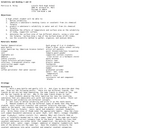
Students will be able to define solubility; identify a substance's bonding (ionic or covalent) from its chemical formula; predict a substance's solubility in water and oil from its chemical formula; determine the effects of temperature and surface area on the solubility copper(II) sulfate; determine the surface area of two different objects; and use the scientific method to gather, organize, and analyze data.
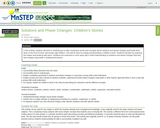
In this activity, students will work in small groups to take vocabulary words and concepts about solutions and phase changes and break them down to the level of lower elementary age children. This will be done by writing and illustrating a children's book. Students will learn by teaching the subject and working with peers. Students are expected to come away with a solid understanding of solutions and phase changes that they were largely responsible in building themselves.

In this project, students will use knowledge of electricity and electromagnetism to collaboratively design and test a model of a magnetic recycling sorter. They will evaluate the performance of their models and propose further modifications based on the output of their magnetic device measured in mT using a Vernier probe. They will also physically test their magnets on a model of a conveyor belt containing recyclable items. Students will track their data from both tests, with the ultimate goal of creating the strongest and most effective magnet with given materials. Finally, students will present their findings and proposed final design to peers and community partners involved in the recycling industry. The entire process takes about 6 weeks. The unit is a great fit for standards within energy and engineering & design.
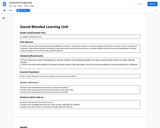
Students will learn how sound travels through different materials. They will be involved in activities to explore how they can create sounds using different materials. They will be involved in activities to experience pitch and volume and how you can create different pitch and volume using different materials. They will design an instrument using recycled materials.

In this STEM activity, students are challenged to solve a real-world problem that is part of the space program using creativity, cleverness, and scientific knowledge, while learning about forces, structures, and energy transfer. The goal is to construct a launcher that can withstand the force of repeatedly launching a one-kilogram bottle of water one meter into the air.

In this activity, students are challenged to find the speed of a battery-powered car. Students will devise their own procedure to measure distance and time and calculate speed over several trials. Students will generate a complete lab write-up to summarize the lab.
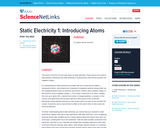
Students review websites to learn about the atom's basic structure and the positive and negative charges of its subparticles. This lesson lays the groundwork for further study of static and current electricity by focusing on the idea of positive and negative charges at the atomic level. Due to the amount and complexity of the information related to this topic, students will gain an understanding of these concepts over time. It is important that they explore this topic in a variety of contexts.
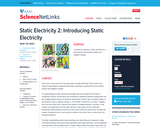
This lesson expands students"™ concepts about atoms and how they relate to static electricity. Students perform some simple experiments, creating static electricity to demonstrate how opposite charges attract each other and like charges repel each other. Then, students explore a website that further explains these concepts.
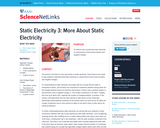
This lesson reinforces the concept that static electricity is a phenomenon that involves positive and negative charges.

In this unit, students will learn how charged objects behave. Students are introduced to charged particles and uncharged particles, interactions between charged and uncharged particles, and conductors and insulators. Students will also learn about the process of polarization. This unit includes videos, animations, and mini quizzes to check for understanding and facilitate learning.
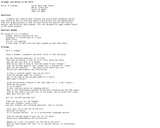
Students will investigate constant and changing (accelerated) motion. They will calculate speed from distance and time measurements and observe the differences between the distance vs. time graph for each motion.
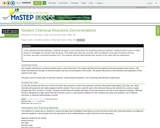
In this lab activity, students are given a set of instructions for producing chemical reactions. Students work in pairs or small groups to investigate the reaction they are given. They determine what has occurred, what is produced, what type of reaction that has occurred, and write a chemical equation for it. The students will then demonstrate their reaction to the class with the explanation.

This is a remix of a NASA resource that describes the forces of a rocket launch and uses non-standard units of measurement to collect data. The remix has added further details for students and also added a mention of Katherine Johnson and her contribution to space calculations. This student-facing handout has embedded links and a data table and is designed for a 1st grade math and science integration.

In this resource, students will explore information about the sun. It contains facts and figures about the sun, an in-depth article describing the physical structure of the sun and how it got its name, a gallery of images, a list of activities and lessons for teachers, and news articles about the sun.

Waves and their Applications in Technologies for Information Transfer, from NGSS 1PS 4-1, 4-2, 4-3, and 4-4.
Driving Question: How can I, as a 1st grade engineer, design a device to let people know I am safe, using light and sound?

Students will examine the thermal energy transfer through a pane glass window and to clarify the physical definitions of heat and thermal transfer.